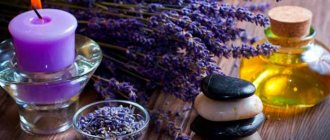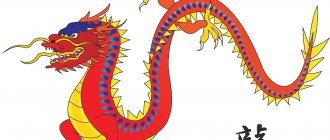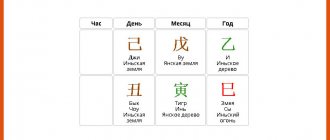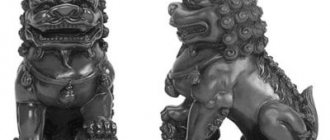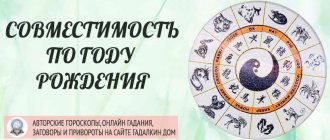Heritage of China
There are 1,200 known species of the plant called “common bamboo” in the world. They grow in the southern continents of the planet: in African, South American, Australian lands and, of course, in Southeast Asia.
At the same time, the record holder for the area of bamboo thickets is China. A third of all known species grow here - over 400. There is especially a lot of it in the south of the famous Yangtze River, as noted by numerous tourists who come here.
Yangtze River
Bamboo forests are mostly located in the south of the Middle Kingdom, namely in the provinces:
- Sichuan;
- Anhui;
- Fujian;
- Jiangsu;
- Chongqing;
- Zhejiang;
- Hunan;
- Jiangxi;
- Guangdong;
- Guangxi Zhuang.
Traditional medicine recipes
This plant can improve human vision.
Ancient practitioners have long used the properties of bamboo to lower temperature, remove toxic substances, destroy pathogenic microorganisms and improve visual abilities. To normalize the functioning of the gastrointestinal tract, doctors advised eating small fresh shoots of the plant. Bamboo is used as an expectorant for respiratory diseases. To maintain youth, it is recommended to grind soft pieces of stems into dust and add them to green or black tea. It is recommended to drink this healing drink 2 times a day.
To get rid of migraines, young bamboo stalks are poured with hot boiled water and left for 3-3.5 hours. You can drink the decoction during severe attacks or regularly 400 ml per day. The roots of the plant are used to prevent and treat ophthalmic diseases. The lower part of the bamboo is filled with water at 60-70 °C and left for 60 minutes. You need to take the drink 1 tsp diluted in 200 ml of water. The optimal regimen is 2 times a day.
About the plant
Bamboo growing in nature can reach gigantic sizes: a height of 40 meters and a trunk diameter of 25 centimeters. It’s hard to believe, but from a biological point of view, it belongs to the cereal family and is considered a grass. This fact makes bamboo the tallest grass on the planet.
Green bamboo in China
There are two main types of bamboo plant:
- with a woody trunk that can branch, forming a beautiful crown with numerous leaves;
- growing like common herbaceous plants, relatively low growing, with a soft stem that does not become wood.
The stems are hollow inside. Bamboo itself grows very quickly - for example, one of its species - madake - can grow more than a meter in 24 hours.
According to rumors, the Chinese used the ability of bamboo to grow quickly as a punishment. The defendant was seated over a bamboo stalk, and soon it grew inside the body, piercing vital organs.
The plant has many shoots, which is why bamboo groves form so quickly. The root systems intertwine and grow over a radius of three meters. They are so powerful that they can withstand earthquakes and landslides.
Bamboo blossom
Bamboo blooms very rarely. Flowering can occur when the plant is 30 years old, or maybe when it is 100 years old. After it, the plant inevitably dies.
Bamboo shoots are the main
food in the diet of giant pandas. When plants die en masse after flowering, pandas may also disappear. Therefore, to preserve the bear population, it is important to trim the stems on time.
What does bamboo mean according to Feng Shui?
Bamboo is a plant characterized by fast growth and unpretentiousness. In Feng Shui, bamboo means rapid growth in all directions (career, study), gradual improvement in life, and material well-being. Strong and hardy, bamboo also symbolizes health.
If a panel, painting depicting bamboo or living bamboo is placed in the children’s area, then they will have good health and rapid physical and intellectual growth. Bamboo signifies the gradual, step-by-step and systematic improvement of life, since each successive section of bamboo is longer than the previous one.
Bamboo in any form (live plant or products made from stems) can gently change the flow of life. This plant is an unsurpassed protector of the home from any negative energy. With it, you will be reliably protected from evil spirits if it is in your apartment, and your wishes will come true as quickly as bamboo grows.
The Chinese plant several varieties of bamboo in their garden because each one sounds differently in the wind, causing the entire garden to sound like an organ.
Bamboo creates beneficial energy in the garden, and the melody created by the bamboo in the wind enhances yang.
Meaning
Residents of China respect and love bamboo, if not to say idolize it. Hundreds of plant species become national pride, as well as a muse and a source of inspiration for people of art, so it also has great cultural significance for the Chinese.
Writers composed poems about him and wrote entire prose treatises. Poets often called him nothing more than “master.”
The most famous treatise was called “On Bamboo”. It was written back in the 3-4 centuries and contained a description of the types and methods of use.
Mountains and bamboo, Chinese painting
Prose writer Wen Zhenheng, who lived in the 16th and 17th centuries, wrote the work “Things that Delight the Eye,” in which, of course, he could not ignore bamboo. He advised how to plant bamboo groves and decorate them: there must certainly be a stream inside, through which several decorative bridges must be thrown.
Under the thickets, it’s good to set up a place to relax with stone benches, or even a place where you can feel like a hermit, spreading out on a mat or on the bare ground with your hair down. Wen Zhenheng shares the secret that there are no needles, cones, or leaves.
The beauty and grace of bamboo are also reflected in painting. It could take artists years to hone their skills and perfect their lines. One of the most famous was Wen Tong, who worked back in the Song Dynasty, in the 11th century.
Many artists have noticed that its intertwined stems are very similar to hieroglyphs.
Can it be given as a gift?
Giving bamboo is sharing happiness and prosperity with a person. This plant is a good gift for friends, family, and relatives. Suitable for both men and women. Bamboo endows each person with its strong energy, attracting prosperity, harmony and good luck.
Knowing about the signs associated with different numbers of plant stems, you can make the gift as useful as possible. It is recommended to choose bamboo taking into account the personal characteristics, goals and life problems of the particular person for whom the gift is intended.
This is a good gift for a wedding day or in honor of the birth of a child, since the plant brings harmony and positive emotions to a young family.
Symbolism
The Chinese associate bamboo with many symbols.
- Longevity
Bamboo stems remain green all year round, even in winter, when the rest of the vegetation sheds its leaves and falls into suspended animation. They can withstand any weather, at any age, therefore they represent long years of life, many years of perseverance, old age filled with happiness and health.
- The goodwill of sons
Xiao is what the followers of Confucius call respect and virtue on the part of sons, children and younger generations in general.
Portrait of Confucius
- Emptiness
The empty cavity inside the stem is associated with emptiness, liberation from materiality - one of the main concepts of Buddhism, Zen and Taoism.
- Mood and state of a person
The plant lives in any weather conditions: rain, heat, cold, hurricane, light breeze, snow, dewy morning, fog, dawn rays and sunset. It looks different every time. It’s the same with a person - he undergoes changes outside and inside, appearance and mood may change, but he must withstand sorrows and joys.
- Strength of body and spirit
The Chinese like bamboo for its qualities: strength, durability, unbreakability, constancy, sustainability. A person should also have such characteristics by training physical and mental endurance.
- beauty
We are talking about beauty both external and internal. They compare each part of the plant to the human features that make it beautiful. Branched powerful roots - power, a trunk rushing upward - determination, a hollow stem - modesty, external purity - purity.
- Happiness and Spiritual Truth
The stem, constantly striving upward, is associated with eternal love, spiritual growth, the desire for power, a faithful companion and a family life full of health, prosperity and harmony.
- Noble husband
When Chinese women dream of a good husband, they imagine a man endowed with all the qualities of bamboo - strong, courageous, persistent, strict, noble. Like him, the ideal man should be flexible but unbreakable, should always strive to grow. The simple appearance of the plant symbolizes the economy and modesty of the chosen one.
- Winter
Bamboo grows even in winter, which is why, together with pine and plum trees, it is called a friend of winter.
Bamboo forest in winter
- Harmony
In the Celestial Empire, bamboo is a wonderful personification of the harmonious relationship between people and natural forces.
The location of the flower and the meaning of its quantity
This plant is an integral part of the teachings of Feng Shui. It can be a talisman against the evil eye and protects the owner of the home and his entire family.
For a living plant, the number of stems is important:
- two stems will create family happiness;
- three stems - happiness in general;
- It is unacceptable to have four stems; in Eastern mythology this is the number of death;
- five stems promise wealth;
- seven stems mean health;
- eight stems - good luck in all areas of life;
- ten stems - successful completion of planned tasks;
- twenty-one stems improve and increase existing happiness.
If the stem is withered, this indicates a failure to fulfill a desire, problem or trouble. A new bush can be started no earlier than in a month, and at least one sprout from the old flower must be added to the new plant. The ritual is not used if the flower is completely rotten.
The stems can be tied with red thread or ribbon - according to legend, the color red is the power of fire and will burn away troubles.
Decorative bamboo always has positive energy; on the astral plane, it contains good and light, the accumulation of good along with growth. The plant protects from negativity from others, gives serenity, joy and prosperity, helps to overcome difficulties and emerge victorious from any situation. Each section on the trunk and nodule are responsible for a specific life stage.
Physically, at the everyday level, it is dangerous - it should not be eaten raw.
In Ancient China, the plant was called lucky, and until now, to this day, it is found in every Chinese home.
The meaning of a flower also depends on its location:
- in the family area, on the eastern side of the house, bamboo will have a positive effect on family relationships;
- in the south - will bring glory and success to the owner;
- in the north side - will enhance career growth;
- in the west - will have a beneficial effect on the physical and intellectual development of the child;
- in the southeast - will reward you with wealth;
- in the north-west - will provide great opportunities in life for travel and travel.
If you place a flower in the center of the house, it will protect both the physical and moral well-being of all household members. You can place it next to children's bedrooms, on the desktop. To enhance the influence of the plant, place a figurine of a Chan Chu toad nearby.
When using any type of plant, take into account the experience of past generations who have passed on their experience accumulated over the years. If bamboo appears in the house, it will become a talisman for the whole family.
Legends
The Chinese have revered bamboo since ancient times, so it is not surprising that legends of Chinese culture are associated with it. Here are two legends full of sadness, love and compassion.
The first legend tells about events that took place 2 thousand years before the present day. In one of the Chinese regions, evil dragons were rampant, bringing a lot of problems to the population. Emperor Shun himself gathered to fight the nine creatures.
Time passed, but the ruler did not return. Then his wives went on a search together. On the way, they learned that their husband had died.
Unable to hold back their tears, the girls burst into tears, and the drops fell on the ground near the river bank and the bamboo that grew nearby. Spots appeared on the stems - as if bitter tears had burned away the traces. Years passed, but the spots and the legend of spotted bamboo remained.
Another story tells of the scholar Meng Zong, who was a very respectful son and treated his mother with love and respect. One day a woman got sick, then she wanted to eat bamboo shoots.
The son went in search, but could not find them because it was winter. Standing by the bamboo trunk, the young man burst into tears from resentment and fear. Suddenly, shoots sprang up in place of his tears.
The scientist collected them, took them to his mother, and she soon recovered. This legend teaches that the respectful love of children can bring favor from heaven.
Signs and superstitions about indoor bamboo
The plant has very powerful energy and certain magical properties. It is believed that bamboo has a positive effect on a person and his home:
- strengthens willpower and self-discipline;
- increases well-being;
- improves quality of life;
- activates positive energy in the living space;
- helps in achieving goals and fulfilling cherished desires;
- eliminates obstacles and life difficulties;
- restores strength;
- attracts good luck.
This plant is chosen by persistent, successful and purposeful individuals. Bamboo effectively cleanses the energy field of all family members and attracts good luck in various areas.
Each sprout, according to legend, is responsible for a certain period in a person’s life. In addition, bamboo gives its owners the ability to easily adapt to different conditions.
Application
The scope of bamboo in China is incredibly wide. Everything you can imagine is made from it.
Scientific discoveries have been associated with bamboo plants since ancient times. For example, back in the Shang Dynasty - which is 16-11 centuries BC - a bamboo drill was invented. Around the same time, an irrigation system and the first running water were invented using bamboo stalks.
Here's where else these versatile plants are used:
1. Food
Young shoots that have just emerged, as well as seeds resembling oat grains, are used for food. The fluffy leaves are removed, and the shoots are subjected to heat treatment - this way the characteristic bitter taste disappears.
Previously, seeds were eaten only during times of severe famine, because bamboo flowering was a rare occurrence and there were few seeds. This is where the belief arose that if bamboo blooms, there will be famine.
2. Paper
During the era of the rulers of the Han Dynasty, at the turn of our era from the last one, paper was invented, which was bamboo sheets divided into equal parts. They were fastened with ribbons or animal tendons - this is how books were made.
Today, paper from the Middle Kingdom also includes bamboo. It is also used in the manufacture of canvases for artists.
3. Construction
Flexible, light, but strong trunks were used in ancient times to build bridges, pipelines, water wheels, transport, scaffolding and even houses. The building of one Chinese bank in Hong Kong, made of bamboo, is especially popular.
Bank of China building
It was designed by an architect named Yu Ming Pei. The height of the 70-story giant is 315 meters. The base consists of bamboo, it is diluted with glass walls, and the frame is supported by only four steel supports - one in each corner.
The masterpiece of architecture, built in the spirit of expressionism, has been standing firmly for many years, despite the elements constantly raging in Hong Kong in the form of typhoons and earthquakes.
The ancient Chinese used bamboo as a measure of length and volume.
4. Gardening
In the Chinese garden, bamboo is used directly as a plant - low-growing and variegated species are better suited for this, and also as a decorative element - bridges, stairs, supports, frames and other exterior items are made from it.
5. Household items
Products from this plant are widely used in the home, interior, everyday life and especially in the kitchen.
These include:
- furniture;
- hats;
- baskets;
- mats;
- Food sticks;
- fabric and clothing;
- wipes for washing dishes;
- dishes;
- curtains;
- chests, caskets;
- painting brushes;
- umbrella handles, canes, fishing rods, ski poles.
6. Musical instruments
Bamboo trunks are used to make not only wind instruments, such as the Chinese flute - dizi, but also national string and percussion instruments - erhu, zheng, sheng.
7. Weapons
This includes arrows, guns, spears, bows, as well as elements for weapons - arrowheads, knife handles.
8. Medicine
The juice contained in the stems of some species, called tabaxir, is used for medicinal purposes. It is used by those suffering from cough, asthma, and sexual disorders. By the way, it is also used as a polish.
Previously, thin syringe needles were made from young plants.
Suitable bamboo products
In addition to a living plant, when decorating the interior of a residential or office space in accordance with the teachings of Feng Shui, you can successfully use various bamboo products: pieces of furniture (tables, chests of drawers, shelves, etc.), decorative ornaments, paintings and images of bamboo , sticks and flutes.
Considered a powerful talisman, bamboo flutes help dispel negative energy and reduce external negative influences not only through their sound, but also through their presence as a decorative element. In the teachings of Feng Shui, such a musical instrument has a special meaning: its successive sections of different lengths represent gradual improvement and favorable development of life, attract good luck, prosperity and family happiness.
It is customary to tie a flute with a scarlet ribbon and decorate it with fluffy red tassels, because this color can enhance its positive effect and activate energy flows. To activate its positive action, it is enough to play the instrument for a few minutes, walking through all the rooms of your home.
Bamboo flutes can be hung on the walls of the house and the ceiling to dissipate and reflect negative energy from ceiling beams and other “secret arrows” aimed at the inhabitants of the house. Guided by Chinese teachings, they are hung at an angle of 30° to the structure of the room.
lucky bamboo
You can often see an ornamental plant in homes and flower shops - it is popularly called the bamboo of happiness. It looks like green sticks with spiral ends. However, in reality they have nothing in common with the bamboo we are used to, except for some external similarities.
This plant is called Dracaena sandera and belongs to the lily family. It is easy to care for, so it can often be found in apartments and offices.
Dracaena Sandera
But the Chinese do not look at the biological differences of plants and love Dracaena Sander just like ordinary bamboo. It is believed that it attracts Qi energy into the house, and with it happiness, prosperity, and family harmony.
It is good form to give a plant as a gift, and for any significant event. The symbolism depends on the number of shoots. The best gift would be a “bouquet” of twenty branches, which is called the “tower of love” - it is a symbol of recognition, friendship, and good wishes.
What do the different numbers of stems symbolize?
According to the signs, it is impossible to grow one shoot at a time, because the energy of the plant depends on a certain number of stems.
- 2 stems improve love relationships between a man and a woman.
- 3 – bring prosperity and good luck.
- 4 – symbolize death.
- 5 – attracts money like a fat woman.
- 7 – improve health, promise longevity to its owner.
- 8 – ensure success on the love front.
- 9 - attract good luck to one of the areas of life, based on the location of the flower (northeast - intelligence, north - promotion at work).
- 20 – strengthens relationships between friends or relatives.
- 21 – normalize energy flow.
How to care for and propagate a houseplant
Caring for bamboo differs from the same procedure with other indoor plants.
Its distant tropical ancestors could have existed both on land and in aquatic environments. This ability was passed on to the miniature descendants of tropical bamboo.
To grow it in water, you should choose a container. Better - transparent. This way you can always see what condition the water is in.
As soon as it begins to become cloudy, it should be replaced immediately. Stagnation for several days will lead to yellowing of the leaves.
Choose this method if you have enough free time to properly care for the plant.
Recommendations for caring for indoor bamboo:
- Growing in water involves using melted or distilled water.
- Pour regular tap water into a container and place it in the freezer. Freeze and thaw. When defrosting, you can remove the core of the ice; all the sediment accumulates in it.
- Place the flower in water at room temperature. Ice water will harm the plant.
- When growing bamboo in water, use fertilizer at least once a month.
- When growing in soil, avoid mold growing in the pot.
- Excess moisture is detrimental to the flower.
- Make sure there are no small pests.
- The best place to grow bamboo of any size is a western or eastern window. Sunlight should penetrate through the tulle curtain. This will eliminate the possibility of burning the plant.
Sunlight is getting hotter today due to ozone holes.
It is recommended to hide any indoor plants from direct rays. And it’s safer for people not to appear on the street on a hot summer afternoon.
Interesting Facts
Decorative bamboo was first developed in China in the 19th century. The second name of the plant is “bamboo of happiness”; it is often found on labels in flower shops. The flower is able to reduce intoxication from harmful substances due to its bactericidal properties.
The greenery and trunk of the plant are often susceptible to diseases. Therefore, it is necessary to carefully monitor the condition of the flower and take timely measures to eliminate problem areas and pests.
It is better to propagate the plant in spring, when young shoots are strongest. At home, propagation can be carried out in the following ways: cuttings and separation of shoots.
Young shoots need to be replanted once a year, adult plants - once every 2-3 years. In addition, long side shoots and outer dry reeds should be pruned annually. The soil in the pot should be loosened frequently: this helps enrich the roots with oxygen.

